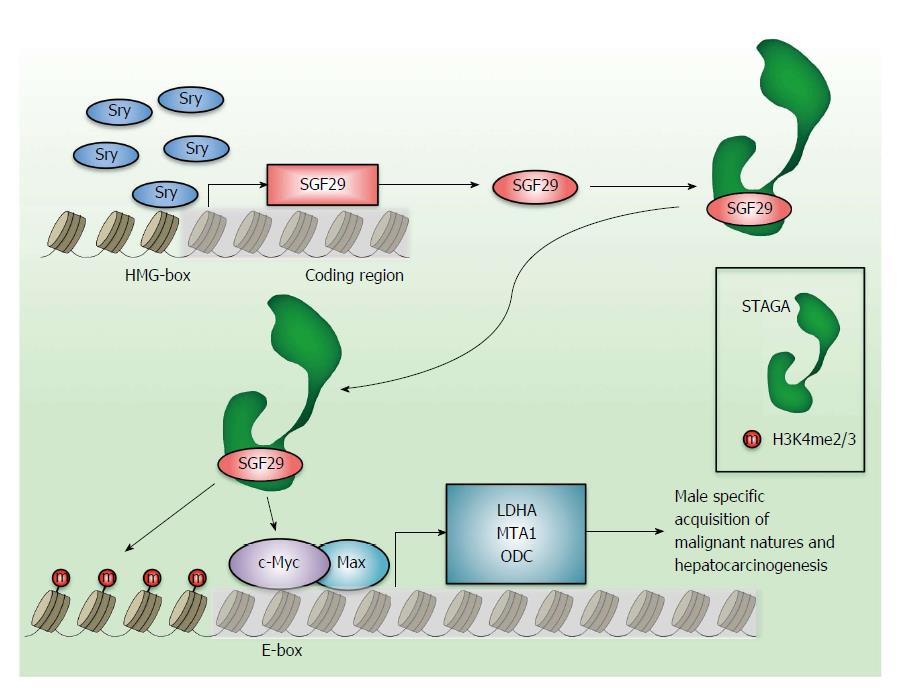Copyright
©The Author(s) 2015.
World J Biol Chem. Aug 26, 2015; 6(3): 139-147
Published online Aug 26, 2015. doi: 10.4331/wjbc.v6.i3.139
Published online Aug 26, 2015. doi: 10.4331/wjbc.v6.i3.139
Figure 1 SAGA-associated factor 29 and Sry pathway in hepatocarcinogenesis.
Deregulated c-Myc expression is a hallmark of many human cancers. The transcriptionally active marker of histone H3, H3K4me3/2 (red small circles depicted in left bottom of the figure), is frequently observed in the active promoter region of the E-box sequences in the c-Myc target genes. SGF29, a component of STAGA complex, which can interact with H3K4me2/3 induce the acetylation of histone at the sites of c-Myc loaded E-box leading to histone unwinding and significant induction of downstream target gene transcription. The upstream regulation of SGF29 elicited by male specific transcription factor, Sry, is also deregulated in HCC. Eventually, c-Myc target genes such as LDHA, ODC and MTA1 expression are induced, which could account for a molecular insight into the male specific acquisition of human HCC driven by the deregulated Sry and SGF29 pathway. SGF29: SAGA-associated factor 29; STAGA: SPT3-TAF9-GCN5-acetyltransferase; Sry: Sex-determining region Y; HCC: Hepatocellular carcinoma; LDH-A: Lactate dehydrogenase-A; ODC: Ornithine decarboxylase; MTA1: Metastasis-associated protein 1.
- Citation: Kurabe N, Murakami S, Tashiro F. SGF29 and Sry pathway in hepatocarcinogenesis. World J Biol Chem 2015; 6(3): 139-147
- URL: https://www.wjgnet.com/1949-8454/full/v6/i3/139.htm
- DOI: https://dx.doi.org/10.4331/wjbc.v6.i3.139









